Several people have recently asked me how to care for Poinsettia plants. The Poinsettia (Euphobia pulcherrima) is a popular gift choice to give during the winter holiday season. When I started researching care for the plant I discovered December 12th is National Poinsettia Day. The University of Illinois Extension provides some history and fun facts about the plant on their Poinsettia Pages.
For example, “in Mexico the Poinsettia is a perennial shrub that will grow 10-15 feet tall.” It was introduced to the United States by Joel Roberts Poinsett, a botanist and first United States Ambassador to Mexico.
Through my reading I also found the holiday plant, with its colorful bracts (modified leaves), is quite the diva. If you do not provide it with exactly everything it demands, it will throw a tantrum and drop those beautiful leaves. Take that! Only filtered water in its dressing room!
Not Too Cold, Not Too Warm
When selecting a place in your home to display the Poinsettia, be sure it does not sit in an area that is prone to cold drafts. The foliage should be kept away from cool window panes. Conversely, the plant should also not be set near appliances or on the television where it could receive too much heat.
An ideal temperature range to keep the Poinsettia blooming is between 65-70 degrees during the day. In the evening, the plant will benefit from a lower temperature of 60 degrees. However, temperatures below 60 could cause root rot.
Not Too Damp, Not Too Dry
Most Poinsettia pots are wrapped in colored foils when sold as gifts. Remove the pot from the foil so water does not sit at the bottom of the plant between the foil wrapper and pot. If you must, must, must have that festive foil, poke multiple holes in the bottom of the foil to allow water to drain.
Poinsettias can be watered when the soil surface is dry to the touch. But never let the plant’s soil completely dry out. It’s a good idea to check the soil daily. Soak the soil until water runs from the drainage holes. If you place a saucer beneath the pot, be sure excess water is dumped.
Bright Light, but Not Too Bright
The Poinsettia will be happiest where it will be exposed to bright, indirect, natural light but not sitting directly in sunlight. Areas near south facing windows are ideal. East or west will work too, but watch out for cool drafts near windows, especially at night. The combination of bright light and low humidity of winter may require the plant be watered more often.
Will the Poinsettia Rebloom?
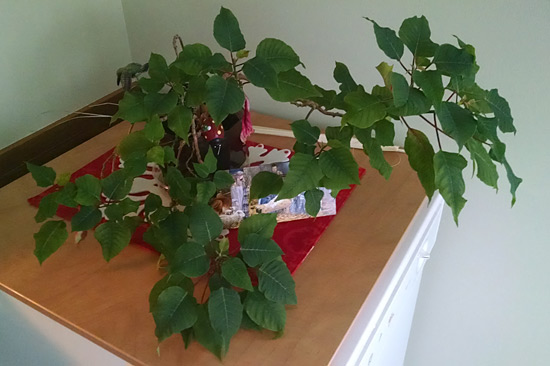
The pictured plant is Mom G’s Poinsettia from a past holiday. It is doing fairly well, but is leggy and she says a bit unpredictable in its blooming. Maintaining a commercial greenhouse vigor in a Zone 5b home environment is tricky.
A Poinsettia can rebloom the following holiday, but the care regime to ensure this is quite grueling. The New Mexico State University Extension, Ohio State University Extension, and Michigan State University Extension all have helpful pdfs for anyone willing to take on the yearlong challenge. Many people, myself included, will compost the plant after it has finished its holiday display.
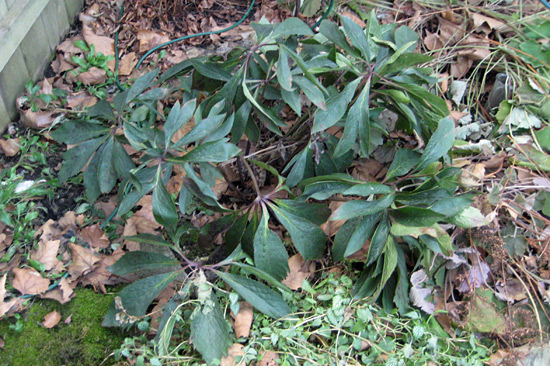
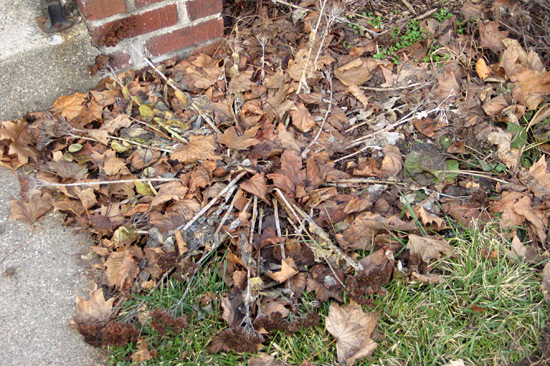
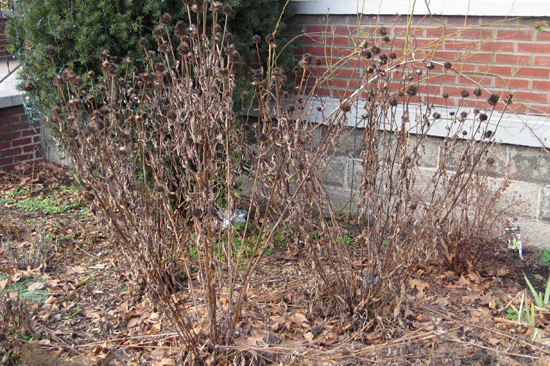
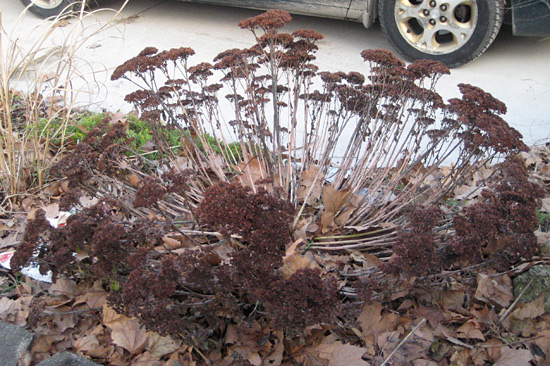
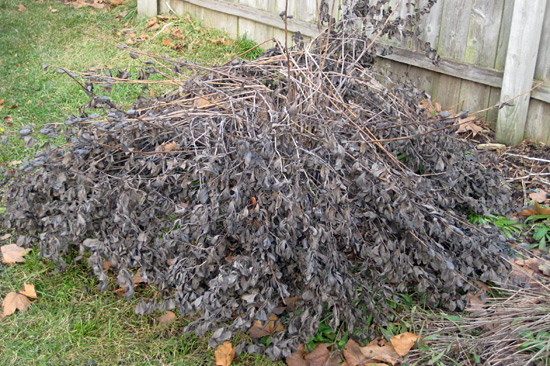
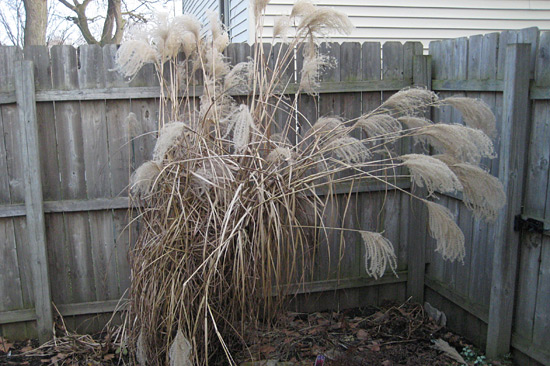 And here is the maiden hair grass which I’ve had to tie together to even keep upright.
And here is the maiden hair grass which I’ve had to tie together to even keep upright.